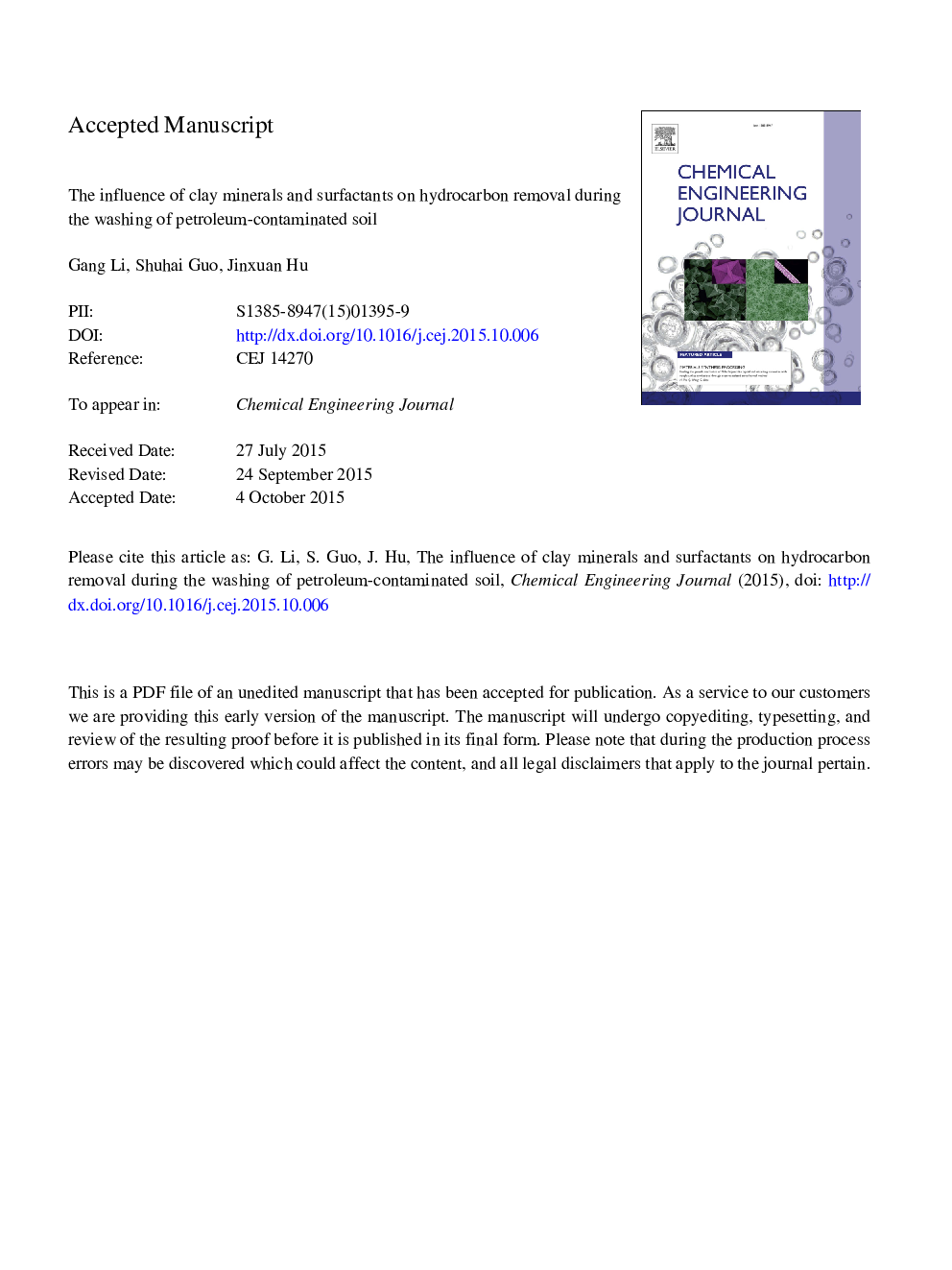| کد مقاله | کد نشریه | سال انتشار | مقاله انگلیسی | نسخه تمام متن |
|---|---|---|---|---|
| 6582624 | 456355 | 2016 | 30 صفحه PDF | دانلود رایگان |
عنوان انگلیسی مقاله ISI
The influence of clay minerals and surfactants on hydrocarbon removal during the washing of petroleum-contaminated soil
ترجمه فارسی عنوان
تأثیر کانی های خاک رس و سورفکتانت ها بر حذف هیدروکربن در حین شستن خاک آلوده به نفت
دانلود مقاله + سفارش ترجمه
دانلود مقاله ISI انگلیسی
رایگان برای ایرانیان
کلمات کلیدی
موضوعات مرتبط
مهندسی و علوم پایه
مهندسی شیمی
مهندسی شیمی (عمومی)
چکیده انگلیسی
Petroleum-contaminated soil washing experiments were conducted to investigate a novel method for surfactant selection. Particular attention was paid to the effect of surfactant on petroleum removal for individual clay mineral types. Four clay minerals (chlorite, kaolinite, montmorillonite, illite) and three types of surfactant (the nonionic: Tween20, Triton X-100; the cation: CTAB; the anionic: Dodec-MNS, NPS-10) were tested. A variety of hydrocarbon removal rates in the different clays and changes in the ratios of petroleum hydrocarbon groups were observed. The results showed that the highest petroleum removal rate for a single clay was 13.2 ± 0.98% (chlorite), 34.2 ± 1.52% (kaolinite), 68.0 ± 2.84% (montmorillonite) and 86.3 ± 2.25% (illite). Montmorillonite and illite showed higher petroleum washing rate. The anionic surfactant Dodec-MNS achieved better desorption efficiency of petroleum in chlorite, kaolinite and montmorillonite. From the analysis of the four groups, Tween20 took on better desorption capacities for saturated hydrocarbon, but there were no obvious regular results for aromatics, resins and asphaltenes. It was proved that, during the washing of actual soil, the higher the content of kaolinite and illite-montmorillonite mixed-layer minerals, the more petroleum was removed by Dodec-MNS. However, when the content of illite and kaolinite was higher than other minerals, Tween20 achieved better washing. The observed 'determination by composition of clay and petroleum' may be used to regulate the selection of surfactant in washing remediation technology.
ناشر
Database: Elsevier - ScienceDirect (ساینس دایرکت)
Journal: Chemical Engineering Journal - Volume 286, 15 February 2016, Pages 191-197
Journal: Chemical Engineering Journal - Volume 286, 15 February 2016, Pages 191-197
نویسندگان
Gang Li, Shuhai Guo, Jinxuan Hu,
